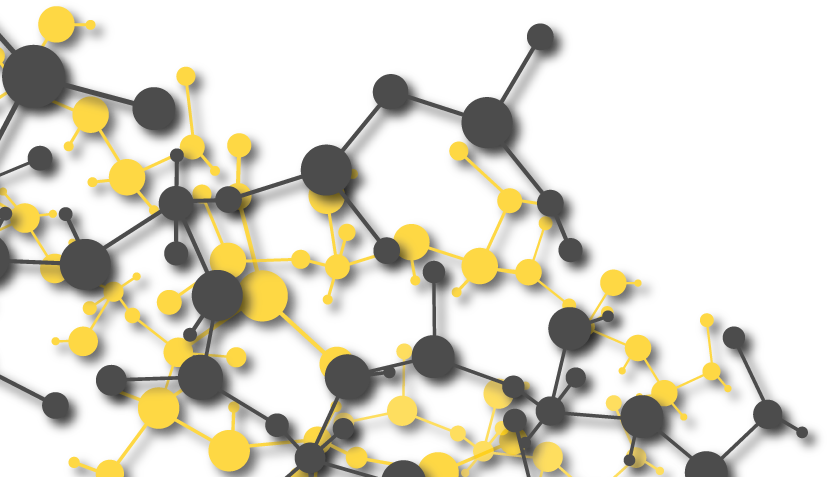N-butyl acrylate (BA) is the largest-volume acrylate ester used in the production of all-acrylic, vinyl acrylic and styrene acrylic copolymers. BA offers price-value and accounts for about 60 percent of the global acrylic ester monomer demand, with a consumption volume of over 2,000 kilo tons.
For over 45 years, Gantrade has built lasting relationships worldwide, based on our ability to deliver quality products like BA consistently and cost-effectively. Let's take a look at why BA holds a special place in the market for acrylate esters.
Other major acrylate esters include methyl acrylate (MA), ethyl acrylate (EA), and 2-ethylhexyl acrylate (2-EHA). Butyl acrylate is used as a “soft-monomer” to improve low temperature properties and toughness. The major markets for BA are in paint & coatings, such as architectural and automotive coatings, followed by adhesives and sealants market. Other application areas include inks, textile, paper and leather finishes, and caulks.
Another significant and growing segment for BA is in thermoplastic ethylene acrylate copolymers (EAC), at BA levels up to 35 % in copolymers. EBA copolymers are used as a impact modifier and processing aid in thermoplastics improving properties such as toughness, flexibility, molding characteristics and part appearances. End use applications include packaging, multilayer films and adhesives. The molecular structure of BA is shown below:
%20Molecular%20Structure.png?width=163&name=Butyl%20Acrylate%20(BA)%20Molecular%20Structure.png)
With a low homopolymer glass transition temperature of -45°C, BA is used in copolymers to improve flexibility, softness, and low temperature properties. BA exhibits superior photostability and is a preferred monomer where weatherability and sunlight resistance are required.
Copolymer Design
Combinations of butyl acrylate with other polymerizable monomers such as methyl methacrylate, styrene, vinyl acetate, acrylic acid, and other acrylate ester monomers allow the design of thousands of copolymer compositions. BA copolymer formulations often contain four or more different co-monomers. In this manner, the performance profiles of copolymers can be tailored to meet a broad range of end-use requirements. As a cost-effective, low Tg “soft” monomer, BA is the co-monomer of choice to balance the hardness and softness, tackiness and block resistance, low temperature flexibility, strength and durability, and other key properties to facilitate end-use goals in the marketplace.
For polymers, the Tg is one of the most important parameters in controlling performance. The Tg is the temperature at which the polymer transitions from a hard and glassy state to an elastomeric, soft and viscous state, when increasing the temperature. This transition is reversible, in that the material will return to its hard and glassy state when cooled below the Tg. So the location of the Tg influences many attributes, including surface properties, flexibility, hardness, strength, and the minimum film-forming temperatures. The minimum film-forming temperature of an acrylic latex is the lowest temperature at which the emulsion system uniformly coalesces to form a continuous film. But even with a fixed Tg, copolymers with different monomer combinations vary significantly in the properties of the final system.
Butyl acrylate is the principle acrylic ester monomer polymerized with methyl methacrylate, styrene, and vinyl acetate monomer to obtain the requisite degrees of hardness, flexibility and toughness in a copolymer system. MMA (Tg 105°C) and styrene (Tg 100°C) increase hardness and cohesive strength and reduce tack. In the copolymer composition, BA (Tg -45°C) increases flexibility, toughness, elongation, tack, and low-temperature properties. Increasing the BA content will also reduce the minimum film forming temperature to below room temperature.
The copolymerizations are easily carried out using free radical polymerization techniques in an emulsion, solution or suspension process. Low amounts of functional comonomers, such as acrylic, methacrylic or itaconic acids and hydroxyethyl acrylate/methacrylate are incorporated in the final composition to increase adhesion, facilitate crosslinking and in the case of emulsion systems, increase the latex stability.
Self-crosslinking chemistry based on diacetone acrylamide (DAAM) and adipic acid dihydrazide (ADH), known as keto-hydrazide crosslinking, represents the most advanced technology for controlled crosslinking of acrylic latex polymers. It begins with copolymerizing low levels of DAAM into a copolymer followed by crosslinking through the pendant ketone moieties with ADH. To learn more about the advantages of DAAM and ADH from the team at Gantrade, see our article on technology of DAAM and ADH crosslinking in acrylic polymers.
Paint and Coatings
Many of Gantrade's global portfolio of clients create high-performance products for the paint and coatings sector. For weather resistance compositions, copolymers of BA and MMA are the preferred combination. High quality and durable acrylic emulsions have revolutionized the paint industry. Acrylics now account for over 25 percent of the global paint and coatings market, with ongoing displacement of solvent-borne acrylics and alkyds. Paint and coatings based on VAM copolymers, including vinyl acrylic copolymers (e.g. VAM/BA) have the advantage of being lower in cost, but they suffer from reduced weatherability and have low UV resistance, as well as higher water absorption and hydrolysis of the vinyl ester moieties.
Polymeric binders based on styrene monomer and butyl acrylate exhibit lower water absorption, higher resistance to hydrolysis, and good wet scrub resistance. Styrene as a raw material also reduces the monomer costs of associated copolymers. But because styrene has poor UV resistance, all acrylic systems based on MMA and BA are preferred for outdoor use, particularly paints and coatings that have a low pigment content, such as varnishes, wood stains and high gloss paints. In paint and coatings with high pigment volume concentrations (PVCs) of 35-55 percent, styrene-butyl acrylate based binders can be used outdoors, for example, in masonry coatings where moisture protection and resistance to water penetration is critical.
Adhesives and Sealants
Gantrade also serves the adhesives and sealants industry with high-performance products, including a variety of acrylate esters like BA. The adhesive properties of acrylic copolymers can be widely varied and are defined by both the adhesive strength and cohesive strength. For pressure-sensitive adhesives, tack is the other dominant property, most associated with low copolymer Tgs. Variations in BA comonomer composition can change both the surface (adhesive) and bulk (cohesive properties). The “hard,” higher-Tg polymer units, like MMA and styrene, show the highest cohesive strength characteristics. The “soft,”, lower-Tg monomers like BA and 2-EHA contribute to the adhesive properties.
In addition, incorporation of polar monomers like acrylic acid and hydroxyethyl acrylate - at low levels - increases wetting of the substrate and interfacial bonding. Low levels of crosslinking improve the cohesive strength. A balance of all of these and other parameters, such as rheological properties, polarity, and hydrophobicity must be achieved to meet the specific performance required in the adhesive.
Thermoplastic Ethylene Acrylate Copolymers
Our product portfolio at Gantrade also offers ideal matches for our global customer base producing applications in conventional blow-and-cast film and sheets. Thermoplastic polymers of ethylene and butyl acrylate (EBA) are thermoplastic resins that can be easily processed on conventional blown-and-cast film and sheet-forming equipment. They are produced in high-pressure autoclaves and tubular reactors via free-radical polymerization chemistries.
Highly compatible with PET, polyolefins, and polyamides, EBA copolymers are used as impact modifiers to improve low-temperature toughness of polymer blends. EBA resins exhibit good adhesion to various polar and non-polar substrates. Typical applications include extrusion coating and lamination, coextruded films for packaging, masterbatch compounds and hot melt adhesives. These thermoplastic resin applications have pushed the CAGR above 4 percent for EBA copolymers.
Sales Specification
Gantrade’s Sales Specifications for N-butyl acrylate are shown below:
| Specifications | Methods |
|---|
| Appearance | Clear, colorless liquid | Visual |
| Color (APHA) | 10 maximum | ASTM D1209 |
| Purity | 99.5 % minimum | GC |
| Specific Gravity, 20°/20°C | 0.8936-0.9036 | ASTM D4052 |
| Water content, Wt. % | 0.05 % maximum | ASTM D1364 |
| Acidity (expressed as acrylic acid) Wt. % | 0.01 % maximum | ASTM D1613 |
| Inhibitor content (MEHQ) | 10 - 20 ppm | ASTM D3125 |
BA is available from Gantrade and GEL in rail tank cars, road tank trucks, or steel drums. BA should be stored at temperatures below ~25°C (<80°F). With MEHQ inhibitor, the product must be stored under an air atmosphere, since the presence of oxygen is required with this stabilizer.
Conclusion
N-butyl acrylate is the major base acrylic ester monomer used in the manufacture of copolymers for paint & coatings, adhesives & sealants, printing inks, thermoplastic ethylene-acrylate copolymers, and a myriad of other application areas. BA is a versatile building block for copolymers, contributing excellent weathering and sunlight resistance, low temperature performance, hydrophobicity, and water resistance.
At Gantrade, we pride ourselves on being the partner of choice for manufacturers of paint and coatings and adhesives and sealants worldwide. We are known not only for delivering high quality chemicals and polymers, but also for providing timely advice with a global perspective on market movements, product availability.
Start a conversation--it's easy. Contact Gantrade today.














